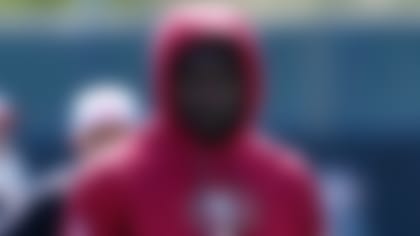All of a sudden Peyton Manning has a big problem with interceptions. Eleven picks in the last three games by any quarterback would garner attention, but when Manning's name is attached to the number, it turns into a football crisis.
There is constant speculation he's lost velocity, the talent around him isn't experienced enough, he's pressing because he's carrying the team, and a hundred other possible reasons.
Before investigating to see if there are concrete football reasons why he might be struggling, here are a couple of facts:
Manning now part of the problem
Peyton Manning has been thought of as the solution in Indy for years, but the Colts' 6-6 mark is in part because of the quarterback's inconsistent play, writes Steve Wyche.**More ...**
» Manning has thrown 24 touchdowns through 12 games this season, or an average of two a game. Last year, he took his team to the Super Bowl and averaged two touchdowns a game, so the positive production is right on pace.
» Manning's averaging an interception every 36.6 pass attempts this season. He averaged a pick every 36.7 pass attempts last year.
So what's the difference this season? Manning's throwing a lot more, and that might be the root of his problems. He is averaging 46.8 passing attempts a game this season as compared to 37.3 in 2009, 36.3 in 2008, 34.3 in 2007, 36.3 in 2006 and 30 in 2005. All the extra throws have forced defenses to play the pass in just about every down and distance. In years past, Manning was a big play-action passer. In the few times he used a play-action concept on his 11 interceptions the past thre weeks, no linebackers really honored the play fake.
As for the loss of tight end Dallas Clark, Manning's favorite go-to guy in times of need, he was targeted 53 times with 37 receptions for 347 yards and three touchdowns prior to getting hurt six games into the season. Jacob Tamme took over and just completed a six-game stretch in which he has been targeted 63 times with 42 receptions for 416 yards and three touchdowns, so it's hard to blame the problems on missing Clark.
Here's a look at some of the patterns that surfaced when I broke down all 11 interceptions from the past three games, watching them multiple times.
Diagrams 1A, 1B and 1C: In 10 of the 11 interceptions, the running back blocked in the opposite direction Manning was throwing. Whether the running back lined up on his blocking side (1A), blocked opposite his alignment (1B) or ran a swing route (1C), Manning was throwing the other way, and it appeared the linebackers took advantage of that to get a jump on their pass drop. The back goes opposite with the hope of holding Sean Lee in the middle or moving him away from the target area, but instead Lee jumps the pass for his first of two interceptions (video).
Diagrams 2A, 2B and 2C: In the Dallas game, all four interceptions were thrown to Manning's left side and it was clear the defense was reading his eyes and overplaying the pass. In diagram 2C, the running back ran a swing route to the right creating three receivers on that side. However, the defense still played the two-receiver side on the left and wound up with a triple team on Tamme (video) trying to find a soft spot in the deep outside. Manning never tried to sell the pass to the right.
Orlando Scandrick jumped an "out" route (video) that was also thrown to the left, knowing he had help over the top. The Alan Ball interception (video) was another example of the safety sitting on top of the left side of the offense and the corner carrying the wide receiver to Ball.
Diagram 3: In the San Diego game, the Chargers played a soft four-deep scheme when the Colts got to the 24-yard line, anticipating the use of seam routes. Defenses chart where teams throw for the end zone with seam routes and many like to strike between the 30- and 20-yard line. It was a first-and-10 situation with Manning in shotgun and the back to his right. That might have been a key that the pass game would go the opposite way with no run threat because of the field position and the offset back.
The Chargers played the deep pass the whole way and Antoine Cason had an easy pick (video). Receiver Brandon James, an undrafted free agent, maybe should have broken the route off and taken the easy 10-yard gain, but again, Manning is dealing with inexperienced receivers, no legitimate run game and defenses that appear able to cheat coverages.
The Colts play the Titans on Thursday night and coach Jeff Fisher likes to use a patient rope-a-dope plan against Manning. If the Colts don't get some kind of run game going, the Titans have an advantage. If Manning keeps throwing opposite the back protection, the linebackers will cheat their drops. If the Colts overwork the left side, the defensive backs will lay in waiting for the ball.
Manning has averaged 32 passes a game against the Titans in his career and has only thrown 13 interceptions in 17 games. Look for him to balance up his offense, break some of the tendencies that have crept in, not lock on his primary receiver and move the safeties off their mark with his eyes and pump fake. It will be very interesting to see how the Colts fare in Nashville.



